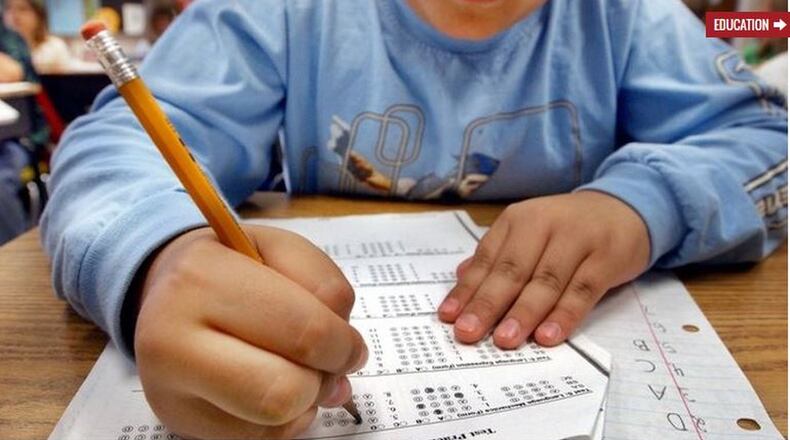Georgia’s frustration with school testing has led to an experiment that could produce a national model with less of it.
Federal law requires states to establish their own educational standards, then test students to check whether teachers taught them well.
Georgia’s tests, the Milestones, come at the end of the year for most students — too late to help teachers adjust their teaching. That leads school districts to heap on other tests that give teachers timely data. It also results in complaints about over-testing.
In 2015, the Georgia Department of Education asked school districts how many extra tests they were giving, and at what cost in classroom time.
The state requires two dozen standardized tests, and the survey of 204 school districts and state charter schools found districts were, on average, giving another five tests. These extra tests consumed, on average, more than a day and a half in elementary school, a day and a quarter in middle school and six days in high school.
"It's just too much, and I think all of us agree on that," Monica Hardy, a teacher from Wilkes County in northeast Georgia, told Gov. Brian Kemp in October at the Gwinnett County stop of his "teacher listening tour." "We've got third graders, fourth, fifth graders, sitting for two, three hours struggling," she said.
State School Superintendent Richard Woods, with support from Kemp, says he wants to de-emphasize the role of test scores in the annual College and Career Ready Performance Index school report card.
Also, new alternative testing pilot programs are promising to reduce duplicative testing by essentially merging the Milestones with the extra tests districts have been giving.
Two groups comprising nearly two dozen Georgia school districts have won tentative federal approval to substitute their own homemade tests for the Milestones.
The Putnam County Consortium and the Georgia MAP Assessment Partnership are vying to create a statewide model. Each would replace year-end standardized state tests with smaller tests given throughout the school year.
The results would serve two purposes: to ascertain students’ strengths and weaknesses early enough to help teachers and to judge schools’ performance at the end of the year.
The experimental tests will give what Michael Huneke, testing director for Marietta City Schools, called “immediate feedback.” Marietta is among the districts in the Georgia MAP Assessment Partnership, which is collaborating with NWEA, the organization behind Measures of Academic Progress, one of the tests many districts use voluntarily to track students during the school year.
“Georgia’s trying to think differently about assessment,” said Chris Minnich, the CEO of NWEA. The test being developed for Georgia will use three “check points” in fall, winter and spring, then “roll that up” for a Milestones-like score in the summer, he said.
The new test is on track to replace some Milestones tests in the experimenting districts in a couple of years. (Until then, their students will be double-tested, so experts can compare results with the Milestones to ensure the measures are comparable.)
Either the MAP or the Putnam groups could produce a test that will be adopted for the whole state. NWEA hopes to emerge with a national model.
“We’re going to make this into a product that other states can use,” Minnich said.
About the Author
Keep Reading
The Latest
Featured


